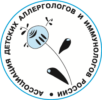Reparative therapy of “small” wounds from the position of dermatologist and cosmetologist
O.B. Tamrazova
People’s Friendship University of Russia, Moscow, Russia
ALLERGOLOGY AND IMMUNOLOGY IN PEDIATRICS, Volume 57 • Number 2 • June 2019, pp. 4 – 12
DOI: 10.24411/2500-1175-2019-00006
An important problem in the practice of dermatovenerologists and cosmetologists is the restoration of skin defects (small wounds) that occur due to damage of various origins. Cracks, erosion, ulcers, excoriation can become the “entrance gate” for infection, accompanied by increased bleeding, pain. The healing process goes through 3 stages: inflammation, regeneration and scarring. Reducing the time of healing phases leads to rapid repair of skin defects. Modern skin damage therapy includes the main directions: prevention and treatment of infection, the fastest healing of skin defects, prevention of pathological healing and cosmetic defects. Modern drug is the drug Dermalibour+ (cream):, which reduces the healing time of wounds and prevents the development at the site of damage of cosmetic defects.
- Абаев Ю.К. Справочник хирурга. Раны и раневая инфекция. Ростов н/Д.: Феникс, 2006. 427 с.
- Классификация длительно не заживающих и хронических ран (язв) нижних конечностей / О.Б. Тамразова, П.И. Толстых, А.В. Гейниц и др. // Лазерная медицина. 2011. Т. 16, № 3. С. 53–57.
- Бордаков В.Н. Рана. Раневои процесс. Принципы лечения ран: учеб.-метод. пособие. Минск: БГМУ, 2014. 31 с.
- Кожные и венерические болезни: учебник для студентов медицинских вузов / О.Л. Иванов и др.; под ред. О.Л. Иванова. Изд. 2-е, стер. М.: Шико, 2010. 478 с.
- Современный взгляд на патофизиологию и лечение гнойных ран / О.Э. Луцевич, П.И. Толстых, О.Б. Тамразова и др. // Хирургия. 2011. № 5. С. 72–77.
- Кузин М.И., Костюченок Б.М. (ред.) Раны и раневая инфекция: руководство для врачей. 2-е изд., перераб. и доп. М.: Медицина, 1990. 592 с.
- Количественный контроль микрофлоры гнойных ран / М.И. Кузин, И.И. Колкер, Б.М. Костюченок и др. // Хирургия.1980. № 11. С. 3–7.
- Ковальчук Л.В. Учение о воспалении в свете новых данных: развитие идей И.И. Мечникова // Журнал микробиологии, эпидемиологии и иммунобиологии. 2008. № 5. С. 10–15.
- Schultz G., Ladwig G., Wysocki A. Mechanism of wound healing. In: Wound Care. Tutorial Medical Series. Stuttgart: Hippokrates Verlag, 1993. P. 34 50.
- Nguyen D.T., Orgill D.P., Murphy G.F. (2009). Chapter 4: The Pathophysiologic Basis for Wound Healing and Cutaneous Regeneration. Bioma-terials For Treating Skin Loss. CRC Press (US) & Woodhead Publishing (UK/Europe), Boca Raton / Cambridge. P. 25–57.
- Раны и раневая инфекция: руководство для врачей; под ред. М.И. Кузина, Б.М. Костю-ченок. 2-е изд., перераб. и доп. М.: Медици-на.1990. 592 с.
- Adamson R. Role of macrophages in normal wound healing: an overview // J. Wound Care. 2009. Vol. 18, № 8. P. 349–351.
- Липатов В.А. Патогенез раневого процесса и подходы к лечению гнойных ран // http://medafarm. ru, http: //www.edentworld.ru/ cgibin/info/ lib.pl?cid=&DocID=1794
- In situ reparation of defects on the skin layer of reverse osmosis cellulose ester membranes for pervaporation purposes / B. Cai, Q.T. Nguyen, J.M. Valleton et al. // Journal of Membrane Science. 2003. Vol. 216, № 1–2. P. 165–175.
- Круглова Л.С., Панина А.Н., Стрелкович Т.И. Современное представление о трофических язвах венозного генеза // Российский журнал кожных и венерических болезней. 2014. № 1. С. 21–25.
- Гиппократ. Сочинения: в 3 т.; перевод с греч. В.И. Руднева; под ред. В.П. Карпова. Москва. РИПОЛ классик, 2013. I том, 402 с.
- Румянцева Е. Заживление ран: современные представления, возможности регуляции процесса // Косметика и медицина. 2006. № 4. С. 56–59.
Tamrazova OB. Reparative therapy of “small” wounds from the position of dermatologist and cosmetologist. Allergology and Immunology in Pediatrics. 2019;57(2):4-12. (In Russ.) https://doi.org/10.24411/2500-1175-2019-00006
For correspondense
O.B. Tamrazova
e-mail: anait_tamrazova@mail.ru
